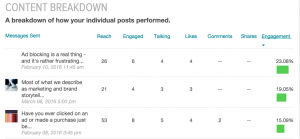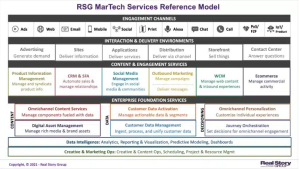— December 26, 2017
As companies continue to recognize the ability blogs have to develop leads and increase web traffic, the need for building solid blog content is growing. In developing this content, many companies aren’t sure if including a sales pitch into their blog content is appropriate. Here’s what you should know about sales pitches on your blog…

How Do Readers Feel About Sales Pitches in Blogs?
It’s no secret that our end goal is to sell products or services. Everyone knows that businesses must make a profit in order to survive, and most people realize that much of the motivation for what we do comes from the fact that it may earn us revenue. We aren’t trying to hide that. Even so, direct sales pitches within our company blogs may actually work against us and keep us from converting customers.
But why?
The main reason is that blogs are places where people go to look for something that is of value to them. Whether educational content, entertainment, or answers to questions, blog readers do not want their valuable experience interrupted with your sales pitch. A small amount of information in a blog partnered with a huge sales pitch just makes visitors feel like they were drawn in under false pretenses.
Some business owners might believe that the sales pitch is the “price” paid in exchange for the reader’s valuable experience. However, the reader doesn’t see it that way. Forcing a product mention or company pitch into an informational blog reduces your company’s credibility as a source for what readers are looking for.
In fact, 74% of consumers say that they are likely to trust branded educational content. That figure drops to only 45% when a blog post includes a sales pitch—even just signing off with a mild product mention, according to Contently.
This means that when you throw a seemingly “harmless” sales pitch in at the end of your blog, your brand’s trust factor is cut by over a third. This may be because readers begin to wonder about the motives behind your educational content. They might begin asking themselves if what you are offering is truly relevant, or if it is simply a way to get you to buy what they are selling.
Keeping Readers on the Page
Once the sales pitch starts, readers are likely to close your page. And because the purpose of a company blog is to build brand authority that ultimately leads to sales, the goal is to get readers to stay on your website as long as possible. Your company’s blog should be built to foster long-term, valuable relationships with readers, recognizing the fact that this investment turns readers into customers.
According to Social Media Today, 61% of customers say that they have made a purchase because of a blog post. This means if you are offering your knowledge and educational content to the world, a strong likelihood exists that potential customers will turn into actual customers because of your blog. Not because of a sales pitch.
What to Do Instead of a Sales Pitch?
Business owners may believe that adding a company mention will increase their sales, but marketers need to work hard to educate their execs on how good content can be quickly ruined with sales pitches. Represent your company’s blog, not as just another place to slap an advertisement, but as a source of rich content that builds rapport with your readers and potential customers.
Instead of sales pitches, position your brand as an expert resource that offers reliable content that is useful or enjoyable. Do this and the customers will likely follow because they will begin to trust your brand and feel loyalty toward it. And since 70% of consumers would rather get to know a company through a blog instead of an advertisement, according to Axonn Media, respect them by refraining from turning your blog into an ad.
Digital & Social Articles on Business 2 Community
(90)
Report Post







